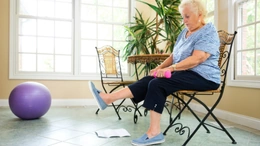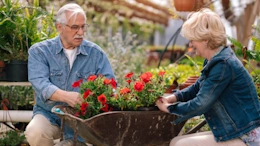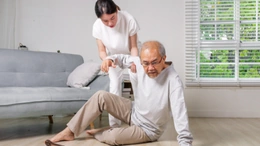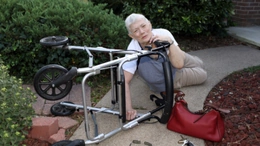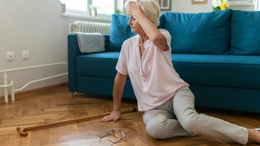The Growing Trend Of Aging In Place: What Families Need To Know

More and more seniors these days are expressing a desire to remain in the comfort and familiarity of their own homes. This is the concept of “aging in place”, which is rapidly gaining attention.
This trend identifies a transition from traditional methods of elder care; the vibrant examples of which are nursing homes and assisted living. A concept that is now becoming popular is an individualistic and self-directed approach.
Every family should learn what the elderly aging at home is and how they can help it. This ensures the safety and happiness of their loved ones. This article examines the increasing trend of aging in one's own home and what families need to know.
What Is Aging At Home?
The term "aging at home" stands for the possibility of older people to continue dwelling in their homes and communities in a safe and independent way.
Their living arrangements need to be such that they do not have to worry about their health and the provision of the basic necessities, be it money or the ability to move physically.
This implies that older adults prefer to be in a familiar environment while they are getting the services and support they need. This is in contrast with relocating to a senior care facility.
This lifestyle is all about choice. It emphasizes dignity and continuity while also ensuring choice. It can even include a wide spectrum of arrangements, like living completely independently or receiving regular help from family members/ caregivers/ healthcare providers.
Why Is Aging At Home Becoming Popular?
A lot of factors are at work behind the growing popularity of aging in one's own home. Let us have a closer look at them:
Emotional And Psychological Benefits Of Staying At Home
Remaining in a familiar space with personal belongings and community connections can seriously boost a senior’s emotional well-being. The memories associated with home are really important to people.
Home offers a sense of security and identity to them. Studies show that older adults who age in place usually have lower levels of stress and depression. This is in comparison to those who transition to unfamiliar care settings.
Staying close to neighbors and pets is an additional benefit. Seniors may even like being close to their local place of worship. This helps them maintain social and emotional bonds that can be disrupted by institutional relocation.
Rising Costs Of Institutional Care
Nursing homes and assisted living facilities usually incur high costs in several regions. Monthly expenses for residential care can go from $2,000 to over $8,000. The costs rely on the level of care and locations. For families, this is not economically feasible.
Aging in one's own home proves to be more flexible and less expensive in the long run, on the other hand. Families usually just opt for part-time caregivers and meal delivery in these cases.
They may even get some tech solutions customized to their budget instead of paying for unnecessary bundle services.
Technological Advances For Increased Home Safety
Technology has a huge impact in supporting the elderly in their homes. Today, the elderly can use smart home devices and fall-detection wearable devices as a means of support.
Old people can also use medical alert devices and telehealth services for their betterment. All these aids can help them do their daily chores and address their health issues without going outside of their home.
One example of the benefits of voice assistants is that they can be used to remind aged users to take the prescribed medicine. On the other hand, motion sensors can keep caregivers informed about whether a senior shows any unusual activity.
These life-saving and risk-alleviating technologies are what give us assurance of safety at home and are fundamentally important as elderly people age in place.
Is Aging At Home Right For Your Loved One?
Aging at home can offer several benefits. It is not a simple solution that is the same for everybody, though. Families need to evaluate their loved one’s unique needs and living situation to find if this approach is safe and sustainable:
Health And Mobility
Begin by checking your loved one's physical and psychological health to assess whether they are undergoing any chronic illnesses, memory issues, or mobility problems. In other cases, consider if they are recovering from surgical procedures or handling disabilities.
Older individuals who are struggling with complicated health problems would need extra medical attention, which in return might affect their ability to age in place.
However, if your beloved family member is quite healthy and is capable of boldly handling their conditions with home care services, it will be an effective way to age at home.
Home Environment
The layout and accessibility of your home are also great considerations. Note if there are any narrow hallways or inaccessible hallways that may be problematic for the older adult. Also, ensure the home is in a safe neighborhood and medical services/ grocery stores are in proximity.
Key Considerations For Safe And Successful Aging At Home
When a family has decided in favor of aging at home, here are some key considerations for safe and successful aging:
Home Modifications
It is important to modify your home for better accessibility and safety. Here are some changes to make:
- Installing grab bars in bathrooms
- Adding ramps or stair lifts
- Improving lighting in hallways and entryways
- Removing tripping hazards like loose rugs
One of the leading risks for seniors at home is falls and injuries, so these changes can mitigate this issue.
Healthcare Access And Monitoring
Ongoing healthcare management is also required. This can include:
- Regular visits from home health nurses
- Remote monitoring tools to track vital signs
- Video consultations with doctors through telehealth platforms
These measures help ensure seniors are in touch with their medical needs without having to travel frequently.
Conclusion
Aging in place is more than just a trend. It is a growing movement driven by a desire for independence and emotional comfort. It may not be suitable for everyone, but it can be a sustainable arrangement for many families.
It required the right planning and support. Take into account your loved one’s health and environment to determine if this option seems sustainable.






